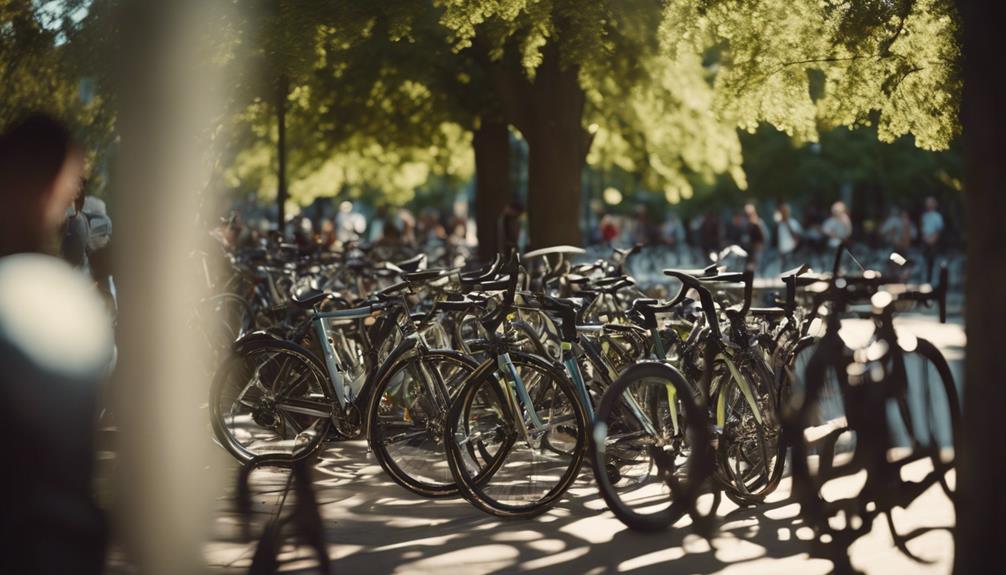As cycling continues to gain popularity around the world, the need for effective bike transport solutions becomes increasingly important. Thule, a leading manufacturer of bike carriers, offers a wide range of products designed to make transporting bicycles safer and more convenient. In this article, we will explore the various types of Thule bike carriers, their features, benefits, and how to choose the right one for your cycling adventures.
Understanding Thule Bike Carriers
Thule is known for its high-quality outdoor products, particularly its bike carriers. The company offers several types of carriers, each designed for different use cases. Understanding the types available will help you make a more informed decision.
Types of Thule Bike Carriers
- Hitch-Mounted Carriers: These carriers attach to your vehicle’s hitch receiver and are popular for their ease of use. They can often accommodate multiple bikes and offer a sturdy, stable ride.
- Trunk-Mounted Carriers: Ideal for those who do not have a hitch receiver, trunk-mounted carriers are designed to fit on the back of your car. They are generally lighter and more affordable.
- Roof-Mounted Carriers: For those who prefer a rooftop option, Thule offers roof-mounted carriers that require crossbars. This type is suitable for long vehicles and provides excellent visibility.
- Specialized Carriers: Thule also offers specific products for unique needs, such as carriers for electric bikes or those designed for fat bikes.
Key Features to Look For
When choosing a Thule bike carrier, several features should be considered to ensure you select the best fit for your needs. Here are some important features to look for:
- Weight Capacity: Check the maximum weight capacity of the carrier to ensure it can accommodate your bike(s) safely.
- Bike Compatibility: Ensure the carrier is compatible with your bike’s frame design, wheel size, and type—especially for e-bikes or fat bikes.
- Ease of Installation: Look for carriers that are easy to install and remove. Many Thule models feature tool-free installation.
- Security Features: Choose a carrier with locking mechanisms to secure your bikes while on the road.
- Foldability: A foldable carrier can save space when not in use and make storage easier.
Benefits of Using Thule Bike Carriers
Investing in a Thule bike carrier offers numerous benefits that enhance your cycling experience:
- Safety: Thule carriers are engineered with safety in mind, providing secure transport for your bikes and reducing the risk of damage during transit.
- Convenience: With easy loading and unloading features, Thule carriers make it simple to transport your bike to trails, parks, or races.
- Durability: Made from high-quality materials, Thule bike carriers are built to withstand the elements and last for years.
- Versatility: Many carriers can accommodate different types of bikes, making them a great investment for families with various cycling needs.
Case Studies: Real-World Applications of Thule Bike Carriers
To illustrate the effectiveness of Thule bike carriers, let’s explore a couple of case studies that highlight their use in different scenarios.
Case Study 1: Family Adventures
The Johnson family, avid cyclists with three children, needed a reliable solution for transporting their bikes during family vacations. They opted for the Thule T2 Pro XT 2 Hitch Bike Carrier, which could hold up to four bikes and had a weight capacity suitable for their diverse range of bicycles.
During their summer trips, they easily loaded and unloaded their bikes, allowing more time for riding and less time dealing with equipment. The locking mechanism provided peace of mind while parked at various trailheads.
Case Study 2: Competitive Cyclist
Mark, a competitive cyclist, frequently travels to races across the country. He chose the Thule ProRide XT Roof Bike Carrier for its sleek design and excellent aerodynamics. This roof-mounted carrier allowed him to transport his high-end racing bike securely.
Mark appreciated the adjustable wheel holders and frame grip that minimized any potential damage to his bike. The easy installation on his car’s rooftop crossbars made it convenient for quick getaways to races, enhancing his overall cycling experience.
Statistics on Cycling and Transport
Understanding the context of cycling can help underscore the importance of effective bike transport solutions. Here are some relevant statistics:
- According to the National Bicycle Dealers Association, bicycle sales in the United States surged by over 50% during the pandemic, highlighting the increased interest in cycling.
- The League of American Bicyclists reported that 12% of Americans ride their bikes regularly, indicating a significant market for bike transport solutions.
- Studies show that 40% of cyclists use their bikes for commuting, emphasizing the need for reliable carriers for daily use.
How to Choose the Right Thule Bike Carrier
Choosing the right Thule bike carrier can be daunting with so many options available. Here are steps to guide you through the selection process:
- Assess Your Needs: Determine how many bikes you need to transport and the types of bikes you own.
- Consider Your Vehicle: Evaluate whether you have a hitch receiver, trunk space, or roof bars for mounting the carrier.
- Budget: Set a budget that aligns with your cycling habits and how often you’ll use the carrier.
- Read Reviews: Look for customer reviews and ratings to gauge the performance of specific Thule models.
Conclusion
Thule bike carriers stand out as a reliable choice for cyclists looking to transport their bikes safely and conveniently. With various types to choose from, there is a Thule carrier for every cyclist’s needs—whether you’re a family planning a weekend getaway or a competitive athlete traveling to races. By understanding the features, benefits, and real-world applications of Thule bike carriers, you can make an informed decision that will enhance your cycling adventures.
In summary, prioritize safety, convenience, and compatibility when selecting a bike carrier. With the right Thule bike carrier, you can hit the road with confidence, knowing your bikes are secure, and focus on enjoying the ride ahead.
